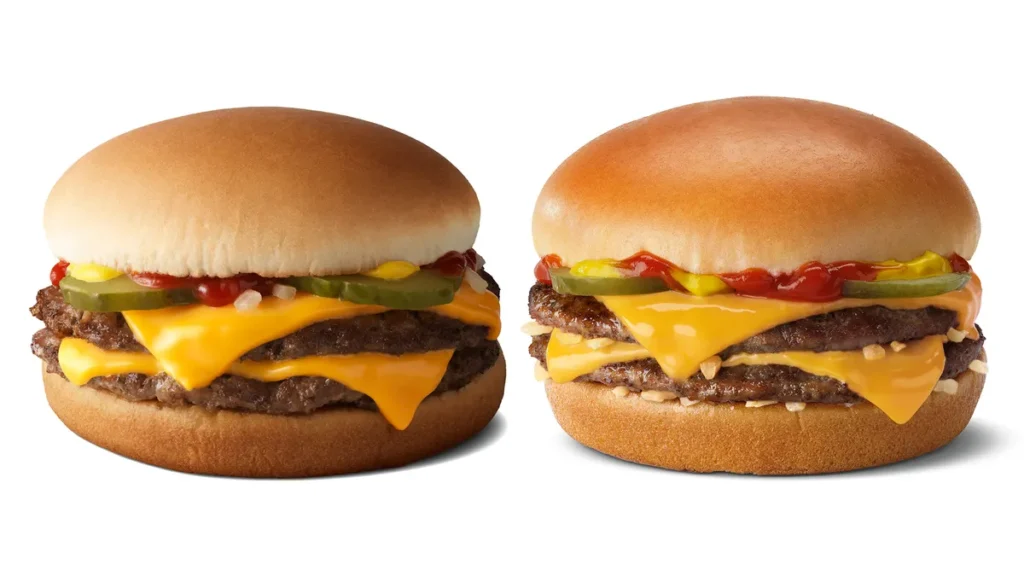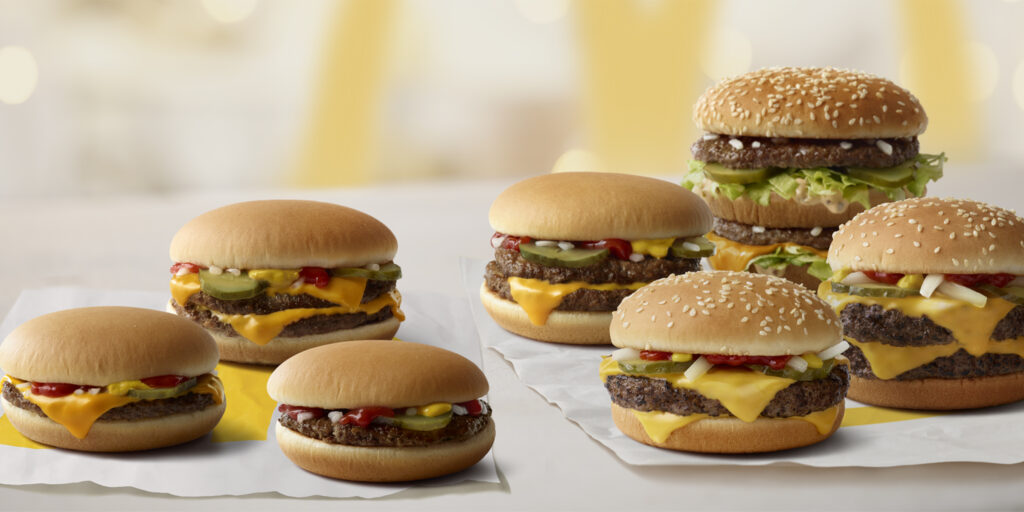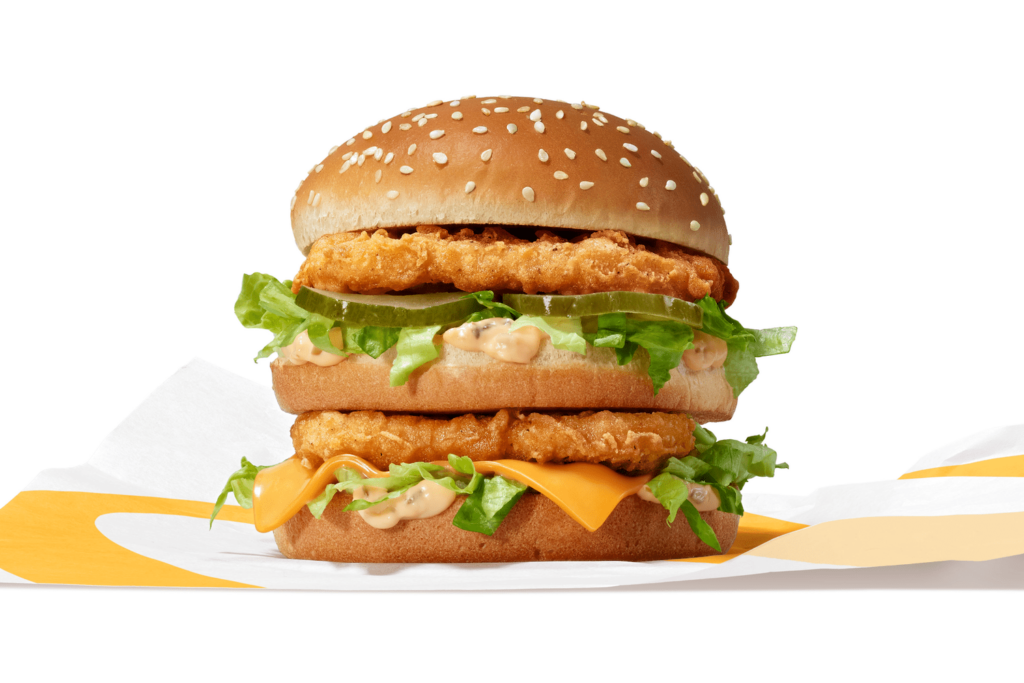Welcome to our blog post on the incredible success of McDonald’s, the burger giant that has taken the fast food industry by storm. In this article, we will delve into the fascinating statistic breakdown of McDonald’s and explore its place in the ever-evolving fast food landscape. From its humble beginnings to its status as a global phenomenon, we will uncover the historical perspective and delve into the legacy of McDonald’s. But first, let’s answer the burning question on everyone’s mind: How many burgers does McDonald’s sell a day? Join us as we uncover the secrets behind McDonald’s phenomenal daily burger sales.
The Burger Giant: McDonald’s Phenomenal Success

mcdonalds burgers
Fast food has become an integral part of our modern lives, and when it comes to the king of fast food, one name stands out among the rest – McDonald’s. The golden arches of this fast food giant have become an indelible part of our cultural landscape, a symbol of quick, convenient meals that cater to our fast-paced lives. But McDonald’s is more than just a purveyor of burgers and fries; it is a testament to corporate success and the power of globalization.
McDonald’s, with its ubiquitous presence, has managed to create a brand that’s recognized and loved across the globe. It’s not just about the food, but also the experience that comes with it. The uniformity of service, the familiar menu, and the assurance of quality have all contributed to making McDonald’s a household name. It’s a place where memories are made, from children’s birthday parties to late-night snack runs.
However, the real question that intrigues many is not just about the brand’s popularity, but its astounding production capabilities. How many burgers does McDonald’s actually churn out each day to satisfy its millions of customers worldwide? The numbers are staggering, and they give us a glimpse into the massive scale of operations that this fast food behemoth undertakes every single day.
So, let’s delve deeper into the world of McDonald’s, where every second counts and every burger flip is a testament to a well-oiled machine that never stops. Let’s explore the journey of a McDonald’s burger, from the grill to your plate, and the phenomenal success story that is McDonald’s.
As we embark on this journey, we’ll uncover some fascinating facts and figures about McDonald’s, shedding light on the sheer magnitude of its operations and its unparalleled success in the fast food industry. So, fasten your seatbelts and get ready for a ride through the golden arches!
Diving Deeper into McDonald’s Remarkable Statistics

mcdonalds burgers
When we delve further into the staggering statistics associated with McDonald’s, the sheer magnitude of this fast-food behemoth’s operation becomes even more apparent. The company’s reach is truly global, serving a mind-boggling 69 million customers daily across the world. To put this into context, McDonald’s serves a number of people each day that is nearly equivalent to twice the population of Australia. This is a testament to the brand’s universal appeal and its ability to cater to diverse tastes and preferences across different cultures and geographies.
It’s not just the customer count that’s impressive. The rate at which McDonald’s churns out its iconic burgers is nothing short of astonishing. The company sells over 75 hamburgers every second. This translates to a staggering 4,500 burgers every minute, 270,000 every hour, and a whopping total of 2.36 billion burgers each year. These figures are a testament to the efficiency of McDonald’s operations and its mastery of the fast-food business model.
Check out: How Much Does an Oreo McFlurry Cost at McDonald’s? Unveiling the Irresistible Indulgence as well as How Many Calories are in McDonald’s Hash Browns: A Tasty and Nutritional Breakdown
And it’s not just about quantity – McDonald’s also leads the pack when it comes to profitability. Despite not being the most expensive or the cheapest player in the fast-food market, McDonald’s emerges as the most profitable. This is largely due to the company’s effective use of digital technology. A significant 67 percent of their sales are made through digital ordering, demonstrating the company’s adaptability to changing consumer behaviors and trends.
With an average price of $3.77 per order, McDonald’s nationwide sales in the U.S. alone amount to a colossal $46 billion. This figure underscores the brand’s immense popularity and its ability to consistently deliver value to its customers.
In conclusion, the statistics associated with McDonald’s are a testament to the brand’s operational efficiency, adaptability, and its deep understanding of the fast-food market. The numbers speak for themselves – McDonald’s is a true titan in the fast-food industry.
Unraveling the Fast Food Culture

mcdonalds big mac
The fast food industry has woven itself into the very fabric of American society, becoming an indispensable part of the country’s lifestyle. The average American is reported to spend approximately $1,200 a year on fast food, a figure that translates into 10 percent of their daily income. This is a testament to the allure and convenience that fast food chains, like McDonald’s, offer to their customers.
Interestingly, the demographic that seems to be the most captivated by this fast food culture is the young adults, specifically those aged between 20-39. This age group is found to be the most frequent consumers of fast food, a trend that could be attributed to their fast-paced lifestyle and the convenience that these food outlets provide. On the flip side, the older demographic, those aged 60 and above, are less likely to visit these fast food chains, possibly due to health considerations and dietary restrictions.
However, what is truly alarming is the impact of fast food on the younger population. It is reported that one in three children in the U.S. consumes fast food, predominantly burgers, on any given day. This suggests that fast food chains play a significant role in shaping the dietary patterns of the younger generation. Adolescents and kids are found to get an average of 12.4 percent of their daily calories from fast food outlets, a figure that underscores the influence of these chains on their nutrition intake.
Fast food has also found its way into the dining routines of American families. A staggering 83 percent of U.S. families are reported to enjoy an average of about 2 1/2 fast-food meals per week. This preference is most pronounced during lunchtime, followed by dinner, breakfast, and snacks, indicating the role of fast food as a quick and convenient meal solution.
Read more: Unveiling the Calorie Count: How Many Calories are in McDonald’s Chicken Sandwich? and How Many Ounces is a Large Drink at McDonald’s? Exploring the Uniquely Large Drink Sizes and Global Variations
The fast food landscape, with McDonald’s at its forefront, has thus profoundly influenced America’s eating habits and dietary patterns. The convenience, affordability, and taste offered by these outlets have made them an integral part of the American lifestyle.
Unfolding the McDonald’s Saga: A Historical Perspective
McDonald’s, the fast-food colossus that we know today, was not built overnight. It’s a story of humble beginnings, innovation, and relentless determination. The first McDonald’s, a modest establishment nestled in the heart of San Bernardino, California, was a far cry from the bustling, global entity we are familiar with today. The brainchild of Richard and Maurice McDonald, the restaurant initially operated as a barbeque drive-in, serving a limited menu to its patrons.
However, the brothers soon recognized the potential in a more focused approach. They decided to pivot their operations, honing in on a select few items – burgers, fries, and shakes. This decision marked a significant turning point in the McDonald’s journey. While the transition did not lead to an instant surge in sales, it set the stage for the fast-food revolution that was to follow.
In 1952, a report by American Restaurant magazine highlighted the budding success of McDonald’s, revealing that the restaurant was selling a staggering one million hamburgers and 160 tons of french fries annually. These numbers, while impressive, were only the beginning.
Check out: Are McDonald’s Fries Halal? Exploring the Halal Status of McDonald’s Fries Worldwide
The true game-changer arrived in the form of Ray Kroc, a man whose vision and business acumen would propel McDonald’s into the annals of fast-food history. Kroc, who initially joined McDonald’s as a franchise agent, eventually purchased the company from the McDonald brothers. Under his stewardship, the company expanded rapidly, reaching corners of the globe the McDonald brothers could only have dreamt of.
Today, McDonald’s stands as a testament to the power of adaptability, innovation, and strategic growth. From a small barbeque drive-in in San Bernardino to a global fast-food empire, the journey of McDonald’s is a compelling narrative of entrepreneurial success.
The McDonald’s Legacy: A Global Fast Food Phenomenon
Fast-forward to the present era, McDonald’s has catapulted itself into a global fast-food phenomenon that transcends the boundaries of food and culture. Its legacy extends beyond the realms of an extensive global reach and astronomical profits. McDonald’s has revolutionized the global fast-food industry, altering the way people perceive and consume fast food.
McDonald’s has built its reputation on the pillars of consistent quality, lightning-fast service, and, perhaps most significantly, delectable burgers that have won the hearts of millions. It’s not just a fast-food chain; McDonald’s has become synonymous with a successful business model that has proven its mettle in the global market.
Imagine this: You’re standing in a bustling McDonald’s outlet, the aroma of freshly cooked fries wafting through the air, the sizzle of patties on the grill, the chatter of customers, and the efficient staff bustling about. You take a bite of your juicy McDonald’s burger, and it’s not just a burger you’re consuming. You’re partaking in a unique global phenomenon that caters to 69 million people, just like you, every single day.
Every bite you take is a testament to the relentless efforts of countless individuals who have contributed to the growth of this fast-food giant. From the humble beginnings of a small barbeque drive-in to the global fast-food empire it is today, McDonald’s has truly rewritten the rules of the fast-food industry.
So, the next time you find yourself in the familiar comforting ambiance of a McDonald’s outlet, remember, you’re not just a customer. You’re a part of a global phenomenon that has fundamentally changed the way the world eats. You’re a part of the McDonald’s legacy.
Read more about: How Many Ounces are in a Large McDonald’s Cup? Unveiling the Thirst-Quenching Enigma and How Much Do McDonald’s Ice Cream Cones Cost? Exploring the Irresistible Delights of McDonald’s Ice Cream Menu
And as you relish your burger, take a moment to appreciate the sheer scale of operations that goes behind serving 2.36 billion burgers every year. That’s more than just a staggering statistic; it’s a testament to the impact McDonald’s has had on our global food culture.
FAQ & Users Questions
1. How many burgers does McDonald’s sell a day?
McDonald’s sells 69 million burgers each day.
2. What is the average price per order at McDonald’s?
The average price per order at McDonald’s is $3.77.
3. Is McDonald’s the most profitable fast-food restaurant?
Yes, McDonald’s is the most profitable fast-food restaurant in the world, with nationwide sales of $46 billion.
4. How many hamburgers does McDonald’s sell per year?
McDonald’s sells approximately 2.36 billion hamburgers every year.
5. How many people does McDonald’s serve every day?
McDonald’s serves 69 million people every day.
6. Where was the first McDonald’s restaurant opened?
The first McDonald’s restaurant was opened in San Bernardino, California.
7. What did the McDonald brothers initially focus on in their food preparation and serving process?
The McDonald brothers initially focused on burgers, fries, and shakes.
8. When did Ray Kroc’s involvement in the company lead to higher burger sales?
Ray Kroc’s involvement in the company led to higher burger sales in the years following his partnership with the McDonald brothers.
Please note that the FAQ section only includes questions and answers related to the information provided in the article.
